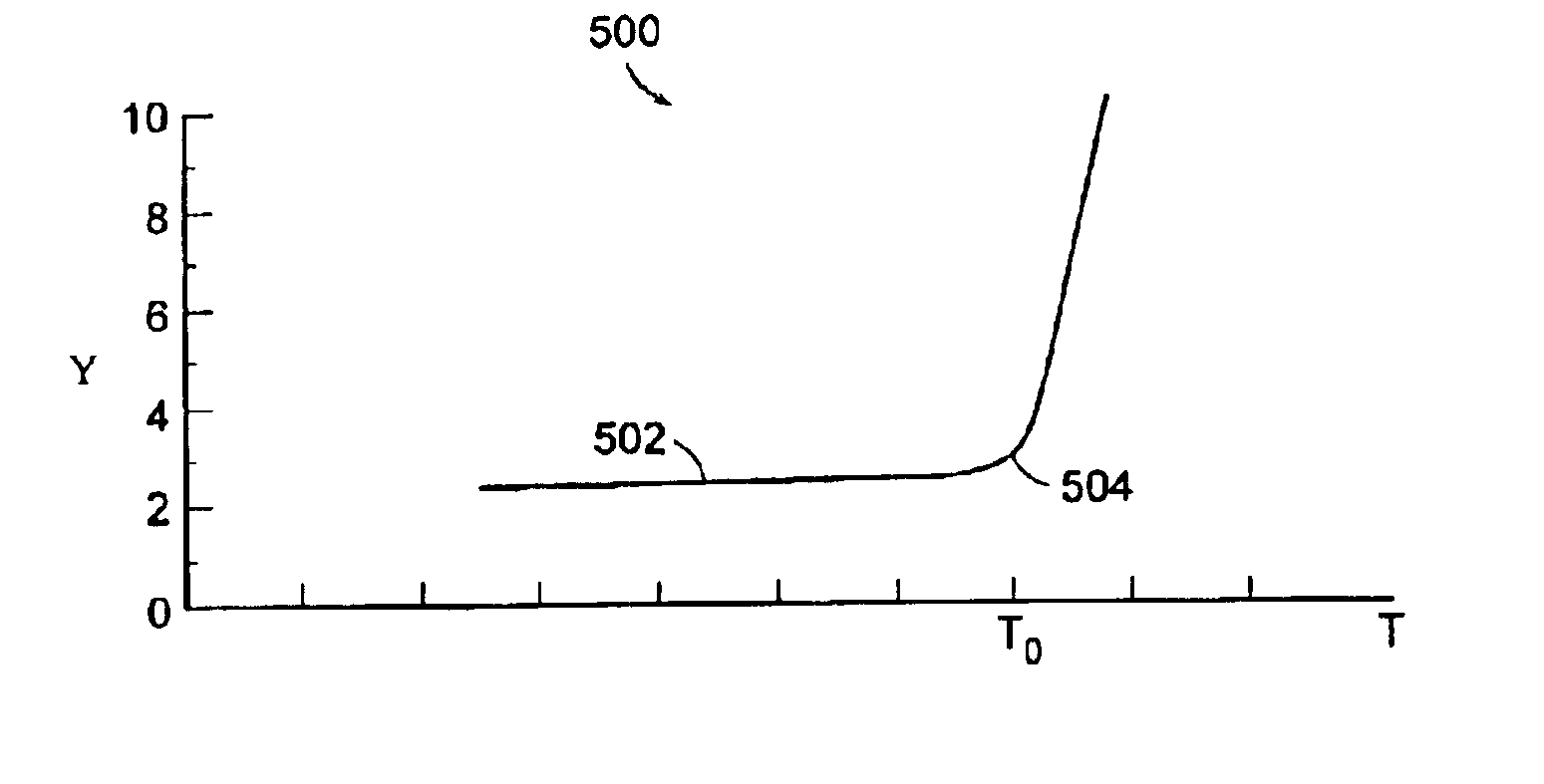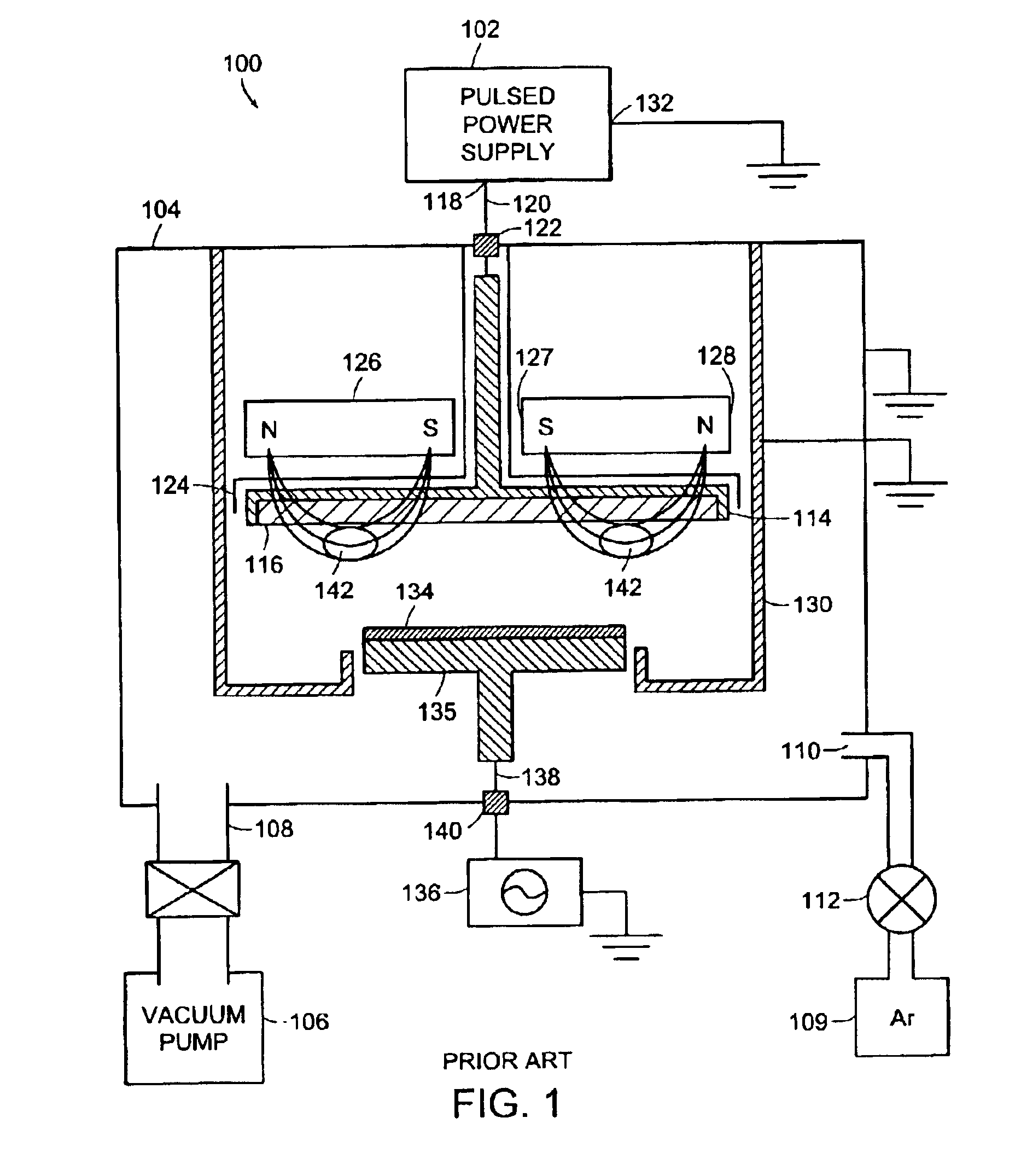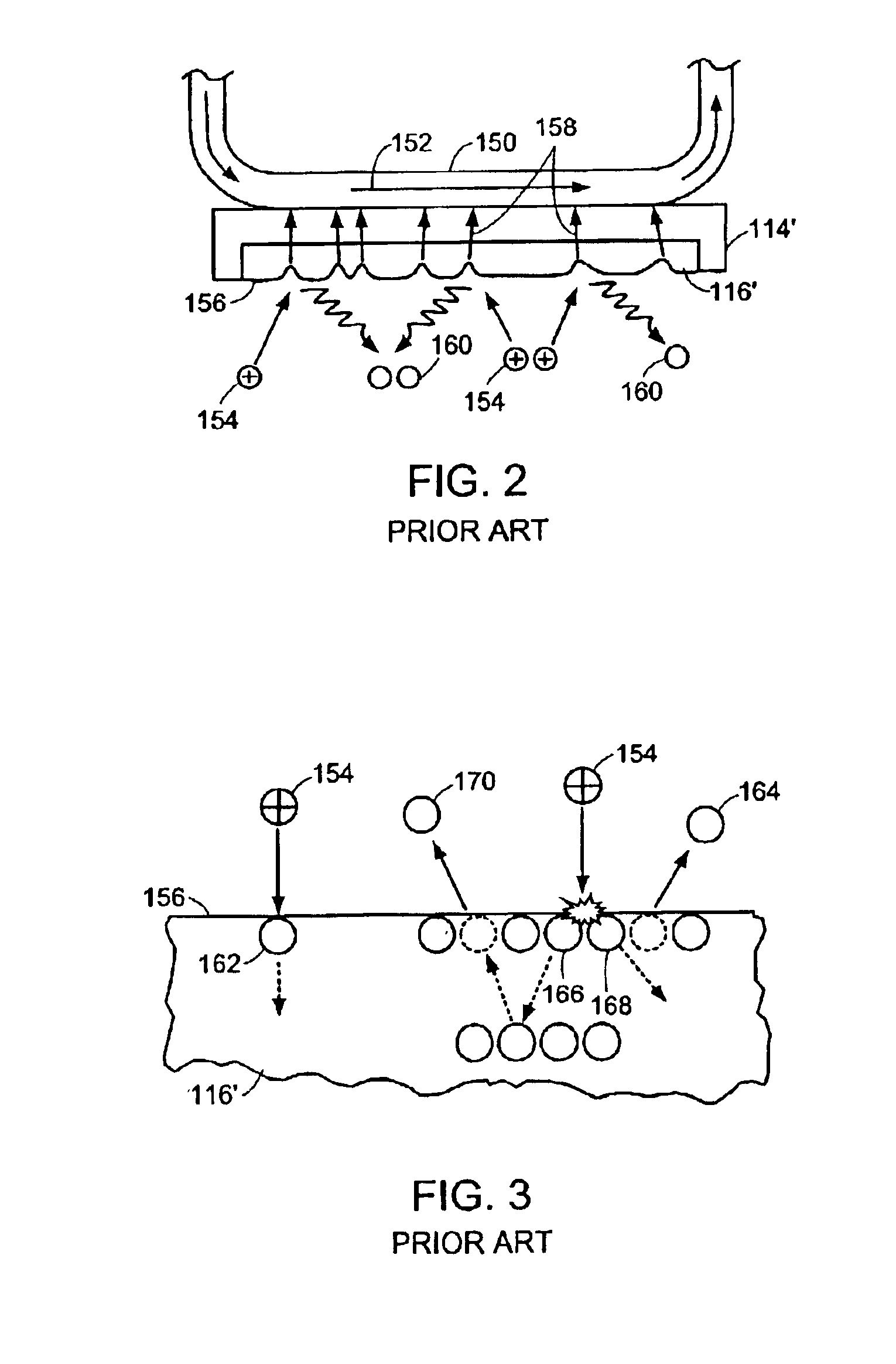High deposition rate sputtering
a sputtering and high deposition rate technology, applied in the direction of electrolysis components, vacuum evaporation coatings, coatings, etc., can solve the problems of relatively low uniformity of films, relatively complex and expensive systems to implement, and the target utilization of conventional magnetron sputtering systems is also relatively poor
- Summary
- Abstract
- Description
- Claims
- Application Information
AI Technical Summary
Benefits of technology
Problems solved by technology
Method used
Image
Examples
Embodiment Construction
[0020]The sputtering process can be quantified in terms of the sputtering yield. The term “sputtering yield” is defined herein to mean the number of target atoms ejected from the target per incident particle. The sputtering yield depends on several factors, such as the target species, bombarding species, energy of the bombarding ions, and the angle of incidence of the bombarding ions. In typical known sputtering processes, the sputtering yield is generally insensitive to target temperature.
[0021]The deposition rate of a sputtering process is generally proportional to the sputtering yield. Thus, increasing the sputtering yield typically will increase the deposition rate. One way to increase the sputtering yield is to increase the ion density of the plasma so that a larger ion flux impacts the surface of the target. The density of the plasma is generally proportional to the number of ionizing collisions in the plasma.
[0022]Magnetic fields can be used to confine electrons in the plasma...
PUM
| Property | Measurement | Unit |
|---|---|---|
| rise time | aaaaa | aaaaa |
| voltage | aaaaa | aaaaa |
| rise time | aaaaa | aaaaa |
Abstract
Description
Claims
Application Information
 Login to View More
Login to View More - R&D
- Intellectual Property
- Life Sciences
- Materials
- Tech Scout
- Unparalleled Data Quality
- Higher Quality Content
- 60% Fewer Hallucinations
Browse by: Latest US Patents, China's latest patents, Technical Efficacy Thesaurus, Application Domain, Technology Topic, Popular Technical Reports.
© 2025 PatSnap. All rights reserved.Legal|Privacy policy|Modern Slavery Act Transparency Statement|Sitemap|About US| Contact US: help@patsnap.com



